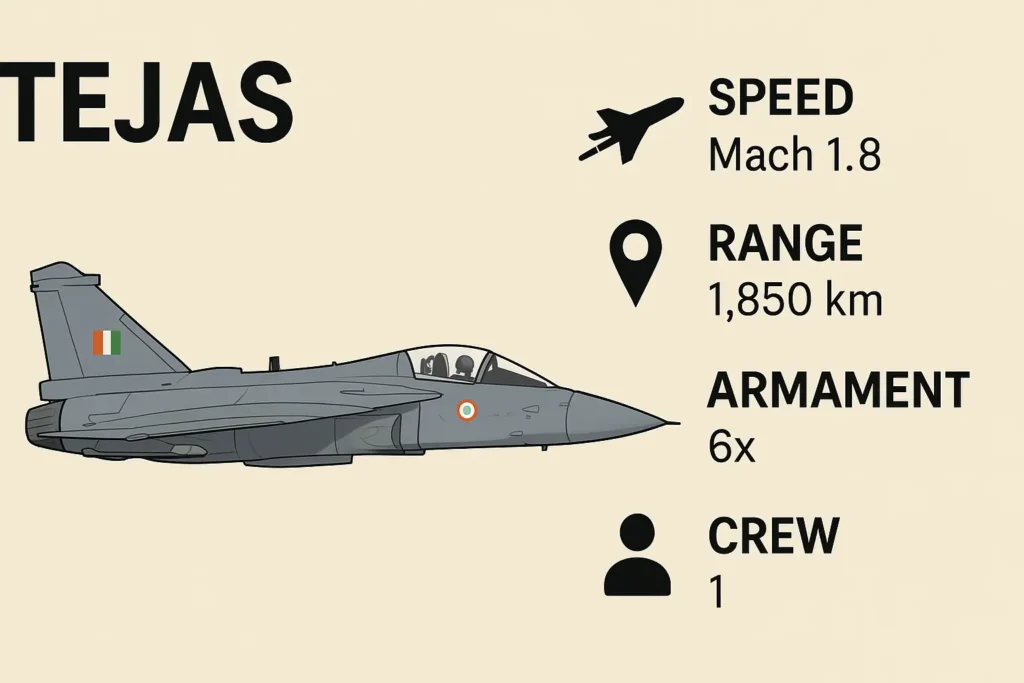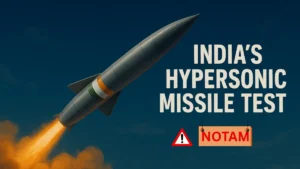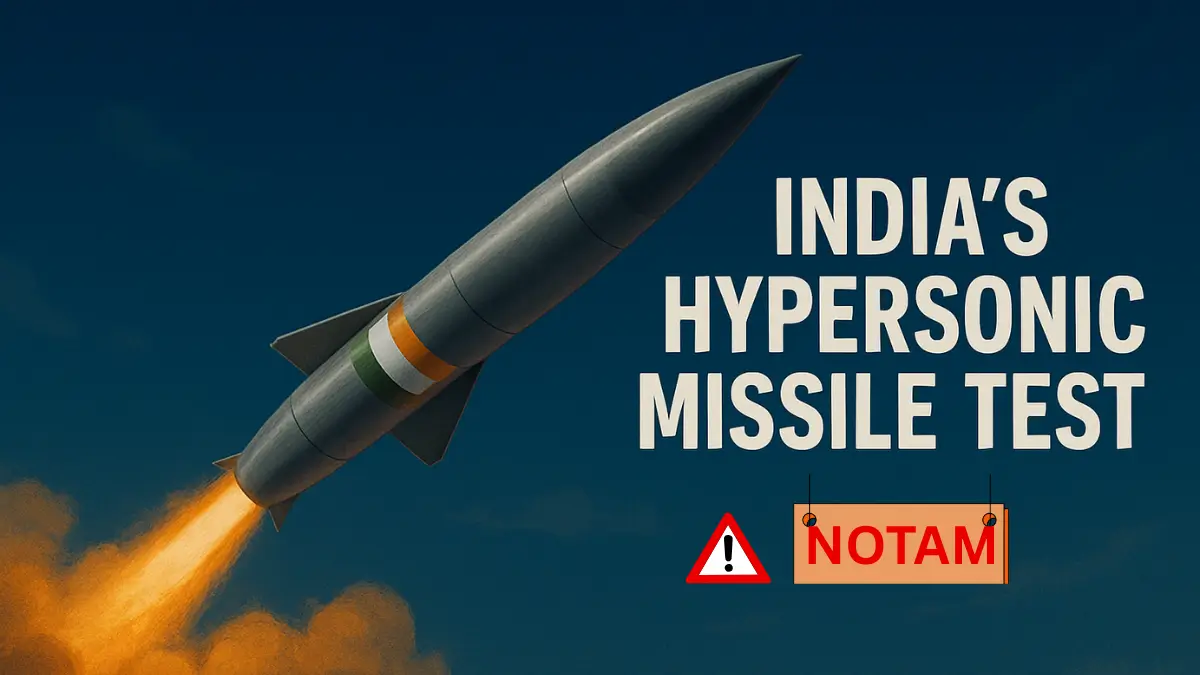An Indian Air Force Tejas light combat aircraft crashed at Dubai Air Show on Friday, November 21, 2025, at 2:13 PM local time, killing the pilot instantly. The HAL-built fighter jet was performing aerobatic maneuvers at Al Maktoum International Airport when it suddenly lost altitude, nosedived, and erupted into a massive fireball. Thick black smoke engulfed the crash site as horrified spectators—including families with children—watched the tragedy unfold.
The Indian Air Force confirmed the pilot’s death in an official statement, expressing “deep regret” and pledging a full court of inquiry to determine the cause.
Who Was the Pilot?
Wing Commander Naman Syal, an experienced Indian Air Force officer from Kangra district in Himachal Pradesh, was at the controls when the Tejas crashed. The 28-year veteran of Indian aviation was selected for this prestigious international display—a role only the nation’s most skilled pilots receive.
Eyewitnesses report the pilot may have attempted evasive maneuvers to steer the crashing aircraft away from spectators, potentially sacrificing his own chance of escape. His bravery did not go unnoticed; political leaders and military officials issued condolences, honoring his service and ultimate sacrifice for the nation.
What Is the Tejas Fighter Jet?
The HAL Tejas is India’s pride—a homegrown, lightweight, single-engine combat aircraft developed under the “Make in India” defense initiative. Key facts:
- Type: 4.5-generation multi-role fighter jet
- Engine: General Electric F404 turbofan
- Design: Delta-wing configuration, agile and compact
- Role: Air defense, offensive air support, ground attacks
- Special Feature: Martin-Baker zero-zero ejection seat (enables pilot escape at zero altitude/zero speed)
- Strategic Value: Replaces aging MiG-21/27 jets in IAF; reduces import dependency; export potential to allied nations
The Tejas is the world’s smallest and lightest fighter jet in its class, representing India’s technological prowess and defense independence.
Minute-by-Minute: How the Crash Unfolded
2:10 PM: Tejas begins low-altitude aerobatic display, performing tight rolls and maneuvers before a crowd of ~150,000 spectators.
2:12 PM: Aircraft executes a sharp diving maneuver—a routine part of the display routine.
2:13 PM: The Tejas fails to gain altitude after the dive. Observers report it “plunged like a stone.”
2:13 PM (30 seconds later): Aircraft impacts ground approximately 1 mile from the exhibition area, exploding in a massive fireball. Black smoke rises hundreds of feet into the air.
2:14 PM: Emergency crews mobilize; firefighting teams arrive within minutes, containing the blaze and beginning rescue operations.
2:40 PM: Air show directors suspend all aerial displays temporarily (approximately 1 hour pause).
3:40 PM: Displays resume with international aerobatic teams (reportedly Russian Knights and Al Fursan F-16s) performing.
5:30 PM: Dubai Air Show concludes with final aerial display, overshadowed by the tragedy.
Why Did It Crash? Investigation Underway
Official Stance: The Indian Air Force has ordered a court of inquiry to determine the exact cause. No official cause has been released yet.

Possible Factors Under Investigation:
- Mechanical failure (engine, hydraulic systems, control surfaces)
- Aerodynamic stall during aggressive low-altitude maneuver
- Pilot-induced error or extreme G-force miscalculation
- Environmental factors (wind shear, altitude density, temperature)
- Pre-existing maintenance issue or structural flaw
Fake News Alert: The Ministry of Defence dismissed social media claims of "pre-flight oil leakage," labeling them as "baseless propaganda" and "deliberately misleading."
Investigation Timeline:
- Preliminary findings: 7-14 days
- Full investigation report: 4-8 weeks
- Investigators will examine flight data recorder, cockpit voice recorder, maintenance logs, and weather data.
Impact on Dubai Air Show & Aviation Community
Show Response:
- Aerial displays suspended for ~1 hour (safety protocol)
- Emergency teams responded within 60 seconds of impact
- Show resumed at 3:40 PM with international aerobatic teams
- No additional casualties or ground injuries reported
- Estimated 150,000+ attendees safely managed
International Implications:
- First major aviation incident at Dubai Air Show in recent history
- Raises global airshow safety protocols and display regulations
- Potential pause on other nations’ demonstration programs pending review
- UAE’s emergency response praised by international aviation authorities
Defense Procurement Impact:
- UAE, Saudi Arabia, and other Middle East nations evaluating defense partnerships
- Tejas export potential briefly questioned; likely to recover after investigation
- Shows India remains committed to safety + transparency
- Incident does NOT derail India’s defense modernization plans
Pilot’s Heroism & Nation’s Mourning
Political and military leaders across India mourned the loss:
Rahul Gandhi (Opposition Leader): “Deeply saddened by the loss of our brave IAF pilot. My heartfelt condolences to his family. The nation stands with them, honoring his courage and service.”
Arvind Kejriwal (Former Delhi CM): “India mourns the loss of a brave air warrior. Heartfelt condolences to the bereaved family. A swift and proper inquiry is needed to determine the cause.”
Eyewitness Account (Shajudheen Jabbar, Indian Expat): “From the way the flight turned before it went down, I strongly feel the pilot tried to save the spectators. It’s so unfortunate he couldn’t escape. We are deeply saddened.”

Also Read:
Colombia Fighter Jet Deal: €3.1B Gripen-E Contract Exposed
10 Reasons Why Exercise Malabar 2025 Is Breaking All Records (Fact #7 Will Shock You)
7 Most EXPLOSIVE India-Vietnam Defence Partnership Breakthroughs VINBAX 2025 Revealed
DRDO tested K-5 SLBM Stage-2 Motor Successfully: India’s Nuclear Triad Sea-Leg Breakthrough
FAQs | Tejas Fighter Jet Crashes at Dubai Air Show 2025
1. Is this the first Tejas crash?
No. A Tejas crashed on March 12, 2024, near Jaisalmer, Rajasthan, during a tri-service exercise. That pilot ejected safely. The Dubai crash is the second incident—and the first with a fatality in public display.
2. What caused the crash?
Investigation ongoing. No official cause released. Court of inquiry examining mechanical failure, aerodynamic stall, pilot error, and environmental factors.
3. Why was Tejas at Dubai Air Show?
To showcase India’s indigenous fighter jet capabilities to global defense buyers, government officials, and aviation enthusiasts. It’s a prestige platform for defense exports and diplomatic soft power.
4. Will India ground all Tejas jets?
Likely temporary operational restrictions pending investigation. Full grounding unlikely given India’s strategic need for indigenous defense capabilities.
5. What’s the future of the Tejas program?
The program continues. Tejas Mark 2 upgrades are in development. One crash won’t derail India’s defense modernization goals, though safety improvements are guaranteed.
What’s Next: Investigation & Recovery
Immediate Actions (This Week):
- Court of inquiry constituted by IAF
- Aircraft wreckage collected and analyzed
- Pilot’s medical records and flight hours reviewed
- Weather data during crash time extracted
Short-Term (Next 2-3 Weeks):
- Preliminary findings released
- Potential temporary grounding of Tejas flights
- Operational restrictions on aerobatic displays announced
Medium-Term (4-8 Weeks):
- Full investigation report published
- Safety recommendations implemented
- Tejas display flights may resume pending findings
- Export negotiations resume after confidence restored
Long-Term (Months):
- Design improvements rolled out if mechanical issue identified
- Enhanced pilot training protocols implemented
- Tejas Mark 2 development accelerated with upgraded flight control systems
- Memorial established honoring Wing Commander Naman Syal’s sacrifice
What This Means for India’s Defense Ambitions
The Tejas crash is a tragedy, not a failure. Here’s why:
Strategic Context:
- India faces mounting defense needs against adversaries
- Indigenous fighter jets reduce import dependency (Russia, Israel, France)
- Make in India defense reduces foreign currency outflow
- Tejas exports to allied nations counter-balance geopolitical rivals
Historical Precedent:
- All nations face aviation incidents (US F-16, Russian Su-35, European Rafale—all have crash records)
- Investigation + improvement is the aviation industry standard
- Safety protocols strengthen after incidents; aviation becomes safer
Future Outlook:
- Tejas Mark 2 in development with upgraded avionics
- HAL’s reputation tested but resilient
- International confidence likely recovers post-investigation
- India remains committed to indigenous defense technology
For NDA Aspirants & Defense Enthusiasts:
This incident underscores aviation’s complexity, the valor of fighter pilots, and the importance of rigorous safety protocols. Wing Commander Naman Syal’s sacrifice will accelerate improvements to India’s defense ecosystem. The Tejas program—despite this setback—remains pivotal to India’s military modernization and self-reliance in defense.
Remembering Wing Commander Naman Syal
Wing Commander Naman Syal gave his life for India’s defense ambitions. On November 21, 2025, he piloted the Tejas at Dubai Air Show—a moment meant to showcase India’s technological pride. Instead, it became a moment of sacrifice.
As the court of inquiry unfolds, India’s defense sector will learn critical lessons. The Tejas program will emerge stronger. And the nation will remember the pilot who, even in his final moments, may have protected the spectators watching him fly.
Rest in peace (RIP), Wing Commander Syal. Your service to India will never be forgotten.











